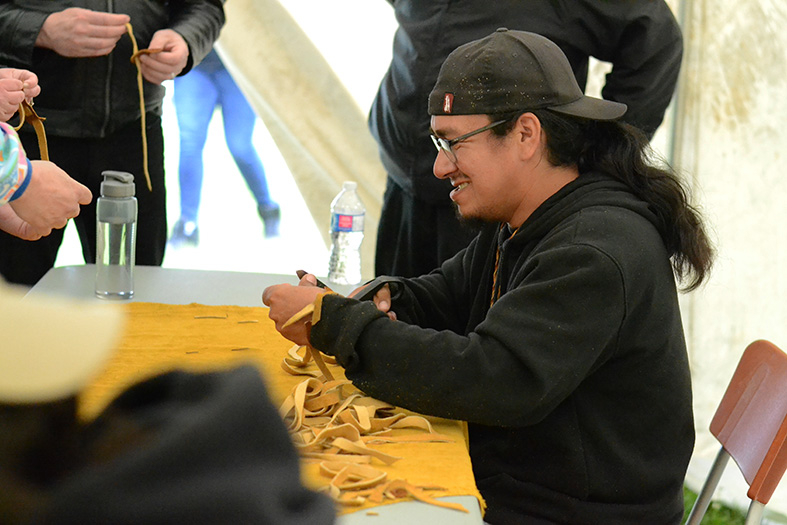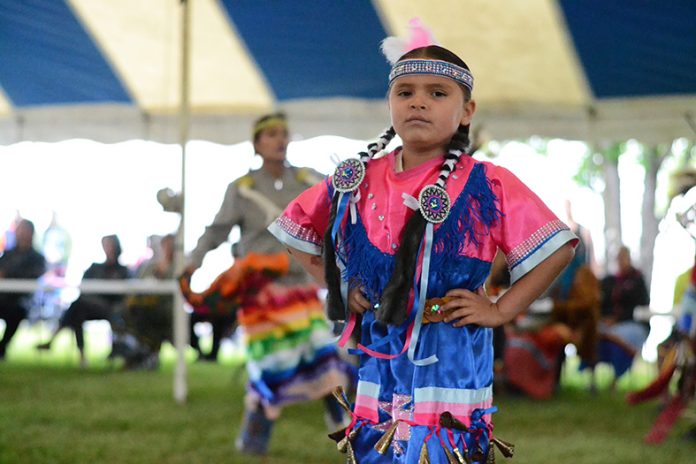
Walking along the riverbank on Wednesday, you could hear drumming and jingling, while the smell of meat smoking and fish frying filled the cool air.
It was all part of National Indigenous Peoples Day.
While people across the country gathered to mark the summer solstice, Prince Albert celebrated with a multi-faceted cultural village.
Several tipis held different activities for the public to learn about the culture, such as medicines, storytelling, games, drumming and trapping.
The day began with a pipe ceremony, followed by a unity parade from Kinsmen Park to the cultural village. After the grand entrance at the site, the food and activities began. It concluded with closing ceremonies and fireworks.
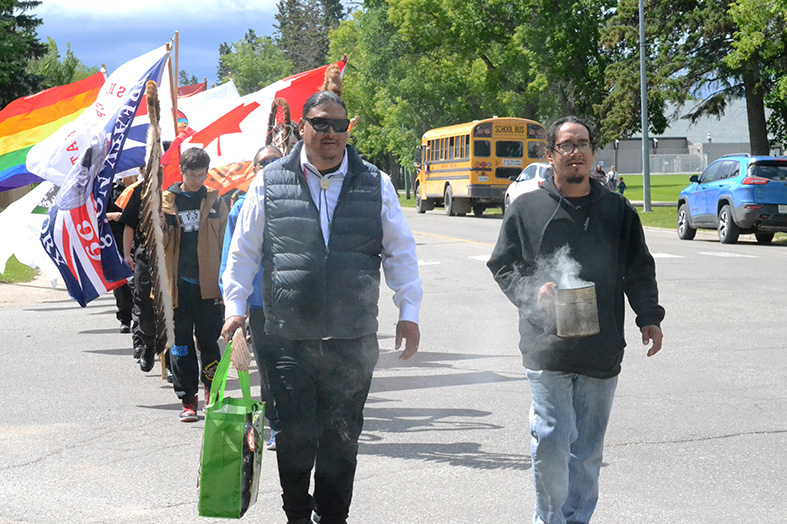
Sweat lodge
Ricky McKenzie held a sweat lodge for the first time in city limits.
A sweat lodge is a purification ceremony that takes place in a dome-shaped hut. The heat from rocks in the centre of the dome creates a hot environment, hence the name, that cleanses the mind, body and spirit.
As McKenzie explained, traditional ceremonies are crucial “when times are tough.”
“There’s a time to play, there’s a time to laugh, and there’s a time to be serious,” he said.
McKenzie said a sweat is focused around prayer. It also consists of singing honour songs and listening to elders.
“This is where I feel good to come and pray,” he said. “The old people kept the ceremonies alive for a reason.”
McKenzie lives in Stanley Mission.
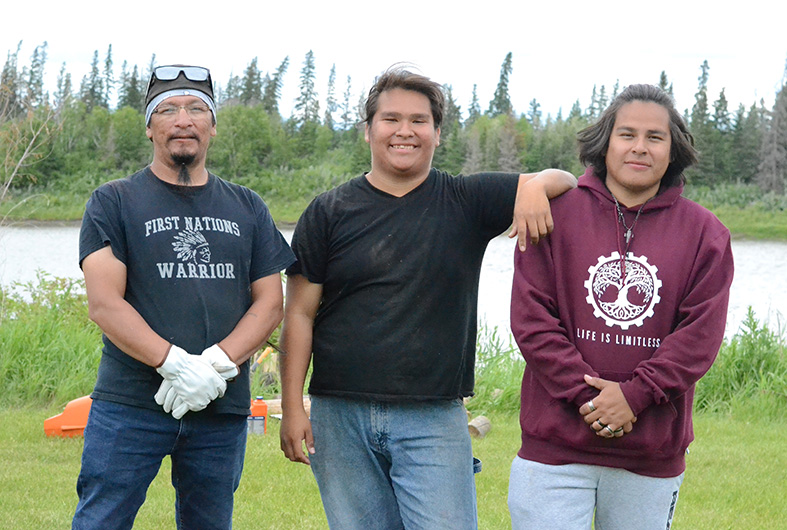
Hide scraping
Haley Godwin travels to cultural camps to demonstrate hide scraping, an interactive activity she feels is particularly important for youth.
“I always tell the youth, you’re connecting with your culture, you’re participating, your ancestors are here with you,” she said.
“They see all the work that goes into it.”
The process begins with stretching out the hide of moose, elk or deer, most commonly. After scraping it, Godwin explained, you paint the hide with a mix of the brain and lard to soften it.
She said the entire process takes between seven and 10 days, with the work split among five people.
The material can be used to make regalia such as drums, rattles, moccasins, mitts and medicine pouches.
“These events are so important to give everybody a little bit of appreciation for the culture, and maybe not stereotypes or misconceptions they grew up with,” said Godwin.
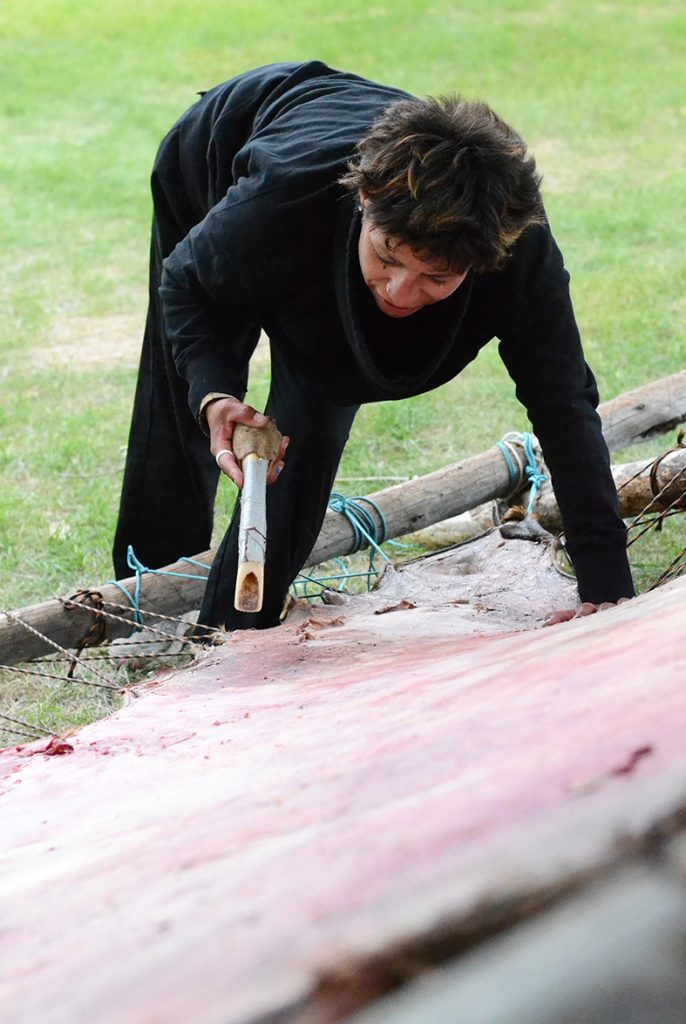
Traditional crafts
Edward Stonestand was using pieces of the completed hides to show the public how to make bracelets.
Like Godwin, he said the crafts give youth, specifically, a sense of accomplishment.
“I did this pretty much, I’d say, 10 years of my life. I got into it at a young age, right from hunting with my mom and dad, my grandparents,” he said.
Stonestand said it’s important to show where the craft materials come from – right from harvesting the animal.
“It’s all passed on knowledge from our elders,” he said.
Several partners were involved in putting on the event for National Indigenous Peoples Day, including the Prince Albert Grand Council, the Indian and Metis Friendship Centre, the Prince Albert Urban Indigenous Coalition and Community Building Youth Futures.
Aside from the tipi activities, there was also pow wow dancing demonstrations, a jigging contest and singing.
